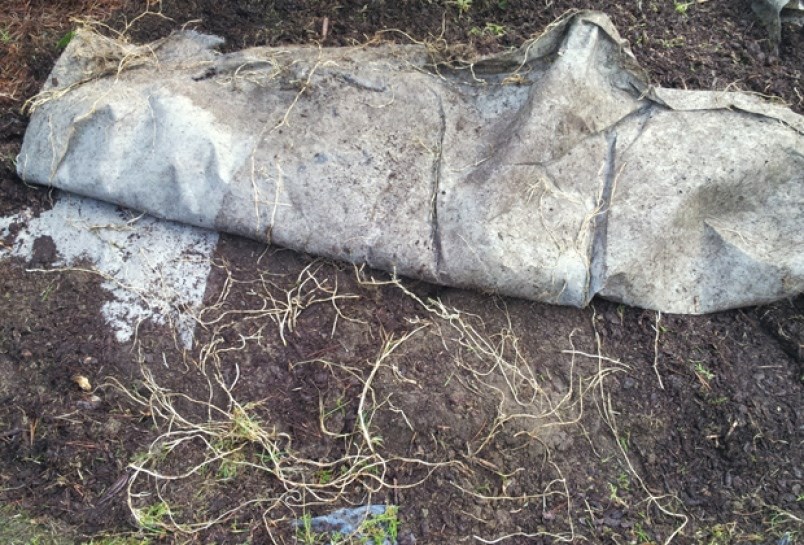I recently had a request to write a column about landscape fabric.
I would say the only worthwhile use of this material is around the building foundation perimeter to protect the porous material on top of the perimeter drains. After placing the fabric, the material is then usually covered with aggregate or river rock. I have seen it used in many types of applications over the years, usually as it is being ripped out!
When used to stop the emergence of weeds (usually nasties like field bindweed a.k.a morning glory, Convolvulus arvensis, or horsetail, equisetum), the offending weeds become a mat of roots under the cloth until they manage to penetrate through a seam, a hole or a worn-out spot. By the time the matter is attended to, the roots have totally taken over the area and it is a lost cause.
Sometimes it is used under large areas of rocks, and if the area is sloping, the rocks slip down leaving bare spots of cloth. Large areas of rock mulch sometimes please their creators for a year or two (rock mulch is very hot) and then the debris that has fallen on the rocks breaks down into soil, weed seeds have a place to start, and it usually ends up being a weed patch after a few years and is extremely labour intensive to remedy.
It usually involves removing the rocks, washing, and reusing in a more practical manner. We once redesigned a garden where the rocks had been exposed to a pipe break which had washed a lot of mud into the rocks. I don’t remember any cloth under the rocks (it was long ago), but I do remember rigging up a washing station with timbers and wire grating, and an assembly line of rock washers.
I could easily get distracted here and turn this into a rant about using rocks as a mulch in the garden but will keep to topic here.
There is no easy solution to weeds! Digging is the best control. There are many downsides to using fabric as a barrier other than masses of weed roots building up underneath it:
- It is a synthetic containing petroleum. (not appropriate for a petrol free garden.)
- It contributes to soil compaction.
- It makes moving of plants impractical.
- It’s expensive and time consuming, needs to be overlapped generously and pinned down to prevent getting disrupted.
- It usually ends up in the landfill where it has a very long life as non-compostable garbage.
If you have an area you are wanting to make less labour intensive, a wood chip mulch is easier to install, easier to change, easier to deal with when caring for the health of plants, and it retains water by slowing down evaporation. But please remember that some pollinators need bare ground for nesting.
Heather Schamehorn is a certified residential landscape designer, educator, sustainability advocate and acupressure therapist. Contact via perennialpleasures.ca
What are your thoughts? Send us a letter via email by clicking here or post a comment below.



